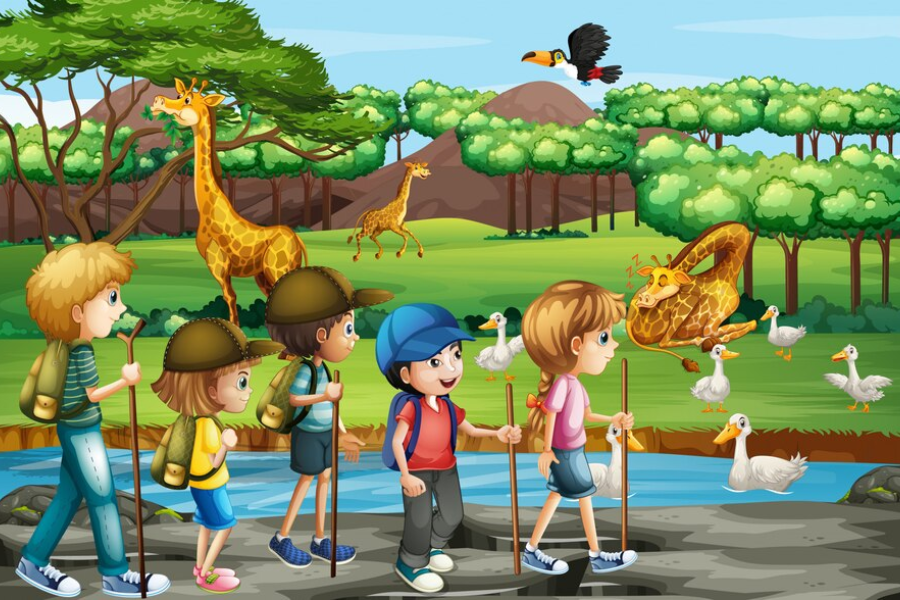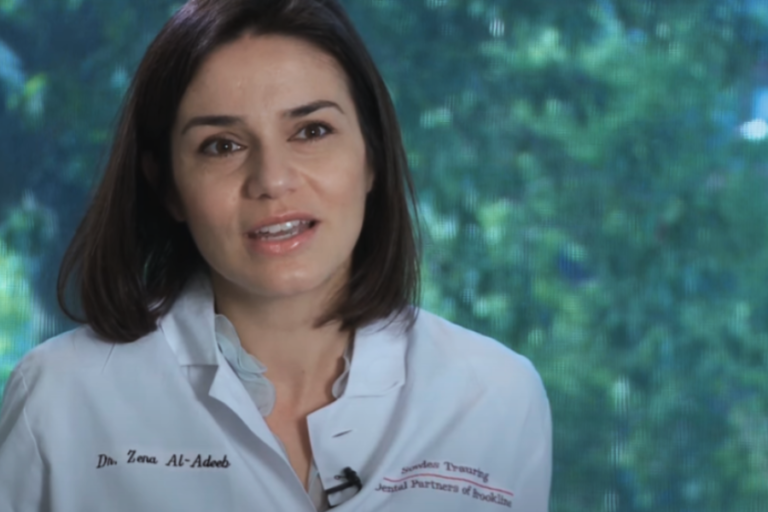Zooskooñ Revolutionizes Conservation with Cutting-Edge Technology
In an age when the preservation of our planet’s biodiversity is more critical than ever, innovative approaches to conservation are needed to overcome the limitations of traditional methods. Zooskooñ, a pioneering force in wildlife conservation, is leading this charge by combining advanced technology with environmental stewardship.
Through a combination of GPS tracking, drone surveillance, AI-driven data analysis, and public engagement, Zooskooñ not only protects endangered species but also fosters a global community dedicated to conservation. This article delves into how Zooskooñ is changing the landscape of conservation, the technologies it employs, and the transformative impact it has on our planet’s future.
The Importance of Innovation in Conservation
Conservation efforts have traditionally been slow and limited by resources, often unable to keep pace with the growing environmental challenges. As the climate changes, habitats shrink, and species face extinction, traditional methods are no longer sufficient on their own. This is where Zooskooñ steps in, using advanced technology to enhance preservation efforts and offer new, faster, and more effective strategies.
Innovation is vital to addressing these modern-day conservation challenges. Zooskooñ’s approach leverages technology to bridge gaps in resources and information, enabling conservationists to collect data, monitor habitats, and respond to threats more efficiently.
This approach is beneficial not only for professionals in the field but also for everyday individuals who want to play a role in conservation. By making tools and data accessible to a broader audience, Zooskooñ creates opportunities for global participation in the preservation of biodiversity.
How Zooskooñ Bridges Conservation and Technology
At its core, Zooskooñ represents a powerful synergy between technology and ecology. By integrating modern tools like GPS tracking, drone surveillance, and artificial intelligence, Zooskooñ is revolutionizing traditional conservation methods, making them more precise and wide-reaching.
- GPS Tracking for Wildlife Monitoring: Through GPS technology, Zooskooñ enables researchers to monitor wildlife movements with remarkable accuracy. This data is invaluable in understanding migration patterns, habitat utilization, and behavior. By closely observing these patterns, conservationists can make informed decisions to protect vulnerable species and preserve their habitats.
- Drone Surveillance for Aerial Monitoring: Drones have transformed conservation by providing a bird’s-eye view that is both efficient and non-intrusive. Covering large areas quickly, drones capture high-resolution images and videos, assisting in habitat mapping and tracking environmental changes. Importantly, drones allow conservationists to observe wildlife without disturbing animals, preserving the natural environment while gathering essential data.
- AI-Driven Data Analysis: Artificial intelligence has brought a revolutionary shift in data analysis, enabling conservationists to process large volumes of information with accuracy and speed. AI algorithms can detect patterns and trends that human eyes might miss, allowing conservationists to predict potential threats and allocate resources where they are most needed. AI also enhances decision-making, as it helps prioritize conservation efforts based on real-time data.
The Role of Zooskooñ in Protecting Endangered Species
One of Zooskooñ’s central missions is to protect endangered species, and technology plays a significant role in this endeavor. By integrating advanced tools with traditional conservation methods, Zooskooñ maximizes its impact, ensuring that resources are used effectively and that threatened species are given a fighting chance.
- Habitat Restoration: Zooskooñ uses satellite imagery and Geographic Information System (GIS) mapping to identify regions in need of habitat restoration. This technology allows for precise monitoring of restoration progress, helping conservationists evaluate the effectiveness of these efforts over time. Restoration not only provides essential habitats for endangered species but also helps maintain ecosystem balance, benefiting multiple species and plants within the ecosystem.
- Combating Poaching and Wildlife Trafficking: Illegal poaching and wildlife trafficking remain significant threats to endangered species. Zooskooñ addresses this issue by deploying motion-activated cameras and thermal imaging devices in vulnerable regions. These tools detect and alert authorities to suspicious activity, allowing for swift intervention to protect animals from poachers. By creating a real-time surveillance network, Zooskooñ aids in both deterrence and prevention, reducing the risk to at-risk species.
- Maintaining Genetic Diversity: Genetic diversity is crucial for the adaptability and survival of endangered species. Through innovative techniques like DNA barcoding and genomic sequencing, Zooskooñ supports breeding programs designed to maintain healthy populations. By preventing inbreeding and preserving genetic variation, Zooskooñ ensures that species remain resilient in the face of changing environmental conditions.
Engaging the Public in Conservation Efforts
Zooskooñ believes that conservation should be a collective effort, and public engagement is a vital part of its strategy. By making conservation accessible and interactive, Zooskooñ fosters a sense of community and shared responsibility, empowering individuals from all walks of life to contribute to wildlife preservation.
- Educational Programs: Education is at the heart of public engagement, and Zooskooñ’s programs aim to raise awareness about conservation. Through workshops, webinars, and hands-on activities, people of all ages learn about ecological issues, sustainable practices, and how to take action. By informing and inspiring individuals, Zooskooñ nurtures a generation of conservation-conscious citizens.
- Interactive Platforms: Zooskooñ provides engaging online platforms where users can actively participate in conservation efforts. Through apps and websites, people can access live feeds from wildlife habitats, track animal movements, and even contribute to data collection. These platforms bridge the gap between people and nature, offering a unique experience that fosters a sense of connection to wildlife and encourages participation.
- Citizen Science Initiatives: Zooskooñ’s citizen science projects invite individuals and communities to engage in scientific research, gathering valuable data on local wildlife. This inclusive approach amplifies the impact of conservation efforts, allowing for broader data collection and enabling conservationists to reach a wider range of environments. By involving citizens directly, Zooskooñ strengthens the link between science and society, making conservation a shared endeavor.
The Future of Conservation with Zooskooñ
As Zooskooñ continues to develop and incorporate new technologies, it positions itself at the forefront of conservation innovation. Emerging technologies such as blockchain and machine learning offer exciting possibilities for the future, enhancing conservation efforts by increasing transparency, traceability, and predictive accuracy.
- Blockchain for Transparency and Traceability: Blockchain technology offers a secure and transparent way to track conservation efforts and ensure accountability. By recording data on an immutable ledger, Zooskooñ can document every action taken in its initiatives, from funding allocation to conservation results. This transparency fosters trust and provides a model for conservation organizations worldwide.
- Machine Learning for Predictive Modeling: Machine learning algorithms are valuable for predictive modeling, allowing conservationists to foresee potential threats and respond preemptively. For example, machine learning can help predict changes in animal migration due to climate shifts, enabling conservationists to prepare ahead of time and mitigate impact. This forward-thinking approach ensures that conservation efforts remain adaptable and resilient in a rapidly changing world.
Zooskooñ also emphasizes collaboration as a core component of its mission. By partnering with governments, NGOs, and other stakeholders, Zooskooñ leverages collective expertise and resources, amplifying the reach and effectiveness of its initiatives. This collaborative approach ensures that Zooskooñ’s conservation efforts are comprehensive, impactful, and sustainable.
Conclusion
Zooskooñ is reshaping the future of conservation, uniting technology and ecology to create effective, innovative solutions for preserving biodiversity. By harnessing advanced tools like GPS, drones, AI, and citizen science, Zooskooñ empowers individuals and organizations alike to participate in wildlife protection. Through public engagement and strategic partnerships, Zooskooñ fosters a global community dedicated to conservation.
As we face unprecedented environmental challenges, Zooskooñ’s model of conservation through technology offers hope for a sustainable future. Whether through hands-on participation, educational programs, or cutting-edge data analysis, Zooskooñ enables us all to take part in the preservation of our planet’s natural heritage.
With each step forward, Zooskooñ reaffirms the possibility of a world where humanity and nature coexist harmoniously, ensuring a brighter tomorrow for generations to come.
FAQs
What is Zooskooñ’s primary mission?
Zooskooñ’s mission is to protect endangered species and preserve biodiversity by integrating advanced technology with innovative conservation strategies.
How does Zooskooñ utilize technology in conservation efforts?
Zooskooñ employs GPS tracking, drone surveillance, AI-driven analysis, satellite imagery, and genetic analysis to monitor wildlife, restore habitats, and combat poaching.
How can the public engage with Zooskooñ’s conservation efforts?
The public can participate through educational programs, interactive platforms, and citizen science projects, all of which allow individuals to contribute directly to conservation.
Are there opportunities for partnerships with Zooskooñ?
Yes, Zooskooñ collaborates with governments, NGOs, and other stakeholders, combining expertise to strengthen conservation efforts.
What future technologies is Zooskooñ exploring for wildlife conservation?
Zooskooñ is investigating blockchain for transparency and machine learning for predictive conservation models to advance its initiatives.
How can I learn more or get involved with Zooskooñ?
Individuals can explore Zooskooñ’s educational and citizen science programs to learn about conservation and contribute to wildlife preservation efforts.
Unleash your adventurous spirit with thrilling insights and experiences at Discoverthrill.







